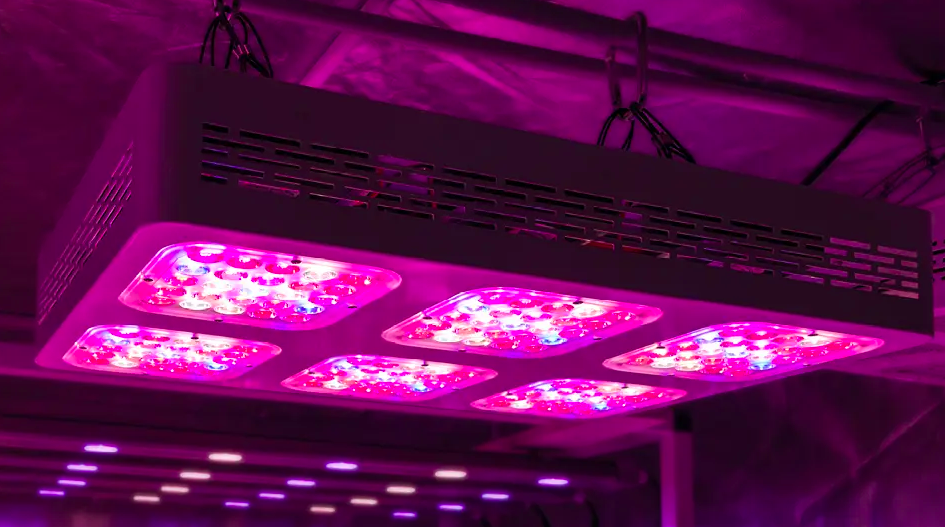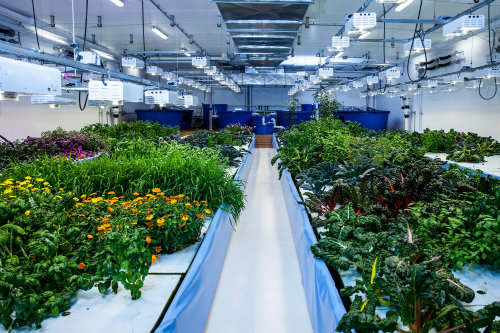We occasionally recommend products we love and might be paid a share of the sale.
The growth and evident diversification of technology has made it quite evident for people to utilize and implement the same in their own life. One such amazing invention and technological breakthrough were with the LED light discovery. While not many individuals realize this, LED lights last for hours and are energy efficient.
However, are the standard LED lights enough to help you grow your plant of choice indoors? This is a question that many beginner growers have in their minds. Rest assured, know for a fact that LED lights and the best LED grow lights in 2021 are designed for two different purposes.
So, if you think you can take out your LED lights from the room and fit them into your grow room, it isn’t going to help promote the growth of the plants. We have sorted out all the information in this article.
LED Lights vs. LED Grow Lights – the Definition
Before we discuss the purpose difference between LED lights and LED grow lights, we must focus on the definition first.
LED lights
LED or Light Emitting Diode lights are the staple light setups that are used in households for illuminating them. They come with a microchip that supports the easy flow of the current for brighter illumination along the way. They are designed with a separate heat sink that keeps the lights cool to touch and efficient throughout their operation.
The reason why LED lights have gained a lot of popularity in the present time is due to the quality of their illumination and the energy efficiency. They are designed to save up to 90% more energy as compared to the standard incandescent lights.
So, LED lights are considerably eco-friendlier and lighter on the pocket too. They also last 10x more than the standard lights that you will likely come across in the market.
LED grow lights
Although LED indeed grow lights are made with the staple LED light set-up, they also come with quite a few differences to their construction, functions, and overall quality. The first and the most important difference lie in its intensity.
Since grow lights are integrated inside a grow room to mimic the function of the sunlight, it isn’t surprising that they come with specific intensity of LED lights fitted in them. They are programmed and function in a way to emit the optimal light intensity to promote photosynthesis in plants.
One of the crucial differences between the standard LED lights with the LED grow lights is in the colour temperature. They are designed to accommodate the needs of the plants and mold their functions in a way so that their vegetative and flowering stages are supported through and through.
What are the Primary Differences between LED lights and LED grow lights?
Now that you have a basic idea about the LED lights and grow lights separately, we should dive into the primary differences.
Keep in mind that the main difference between these two types of lights lies in their function. So, let us take a look at the same:
-
Purpose
The first and possibly the most common difference between these two types of lights is our purpose. While the LED lights are used for standard illumination of the room and the surroundings where they are fitted, the purpose of the LED grow lights is to promote the process of photosynthesis.
The latter encourages plant growth by molding its temperature and settings to support the distinctive growth phase in both plants.
-
Variety
When it comes to the standard LED lights for households and rooms, you have your standard available options around. While on the other hand, with grow lights, you have a lot of variety. If the standard LED grow lights don’t work out in your favour, you can always switch it up with the other types of grow lights, including fluorescents, incandescent, HIDs, etc.
-
Colour spectrum availability
Next up on the list of differences between the LED lights and LED grow lights is the difference in the colour spectrum. The normal LEDs come with a limited colour spectrum. On the other hand, the LED grow lights come with a variety of colour spectrums, including red and blue spectrum light. The blue and red-light spectrums help during the vegetative and the flowering phase respectively.
Just because your standard LED lights in the house is made with similar composition and material doesn’t mean that you can put them in your grow room. Instead, the LED grow lights are specifically designed and programmed to promote the optimal growth of the plants in the grow room. They are designed to promote plant growth. But it also means that you can rely on the standard LED lights to put inside your grow room and expect the same kind of results.
Can I use regular LED lights for my indoor plants?
Just because we have been saying from the get-go that you can’t use LED lights for your grow rooms doesn’t mean that you can’t use them at all. Typically, placing a high-intensity LED grow light in your grow room can do a lot of difference. Putting LED grow lights in your grow room won’t hurt the plant at all.
However, that doesn’t mean that you can blindly rely on the same for all your work. The plants won’t necessarily respond the best to the standard LED lights. So, it goes without saying that if you want better results, you need to invest in good-quality LED grow lights.
Also, the LED grow lights are designed to emit blue and red light specifically on the plants that promote optimal growth during the vegetative and flowering phases of growth.
The endpoint to this discussion is that the regular LED lights won’t cause any distinct harm to your plant but they will also not promote plant growth. So, you need to be mindful of the same.
Are LED grow lights exposing too much light on the indoor plants?
When you fit in an array of LED grow lights inside your grow room, the most common question that anyone has is with the degree of exposure. Also, there is a lingering question about how much grow light exposure is too much?
Just keep in mind that grow lights are specifically designed to mimic the sunlight. So, even if the intensity is too high, be assured that it is doing its job and not going to damage your plant in the long run. However, the exposure from the regular LED lights becomes too much for some plants and especially when they are trapped inside the grow rooms.
The best way to keep up with the growth and quality of the light is by checking the color of the leaves in the plant. If you find them growing brownish, they have likely been over-exposed to the LED grow lights. In such a case, your ideal bet would be to remove it from the grow room to ensure no further damage is inflicted on them.
Too much of anything is bad for your plants, and that includes the grow light exposure too. So, you need to be mindful of the exposure.
What kind of grow lights is good besides LED?
Although the LED grow lights are the most popular options in the market, be assured that there are quite a few other alternatives too. If you aren’t sure which ones to pick, we have some amazing choices to share with you.
Some of the best alternatives for LED grow lights include:
- Metal halide or high-pressure sodium lights
- Fluorescent lights
- Incandescents
These are the three most popular options that you can look into. But, there is a wide range of cheaper and more expensive choices you can consider as well.
FAQs
Can I use a standard LED light as grow light?
The traditional LED grow lights aren’t equipped to help with the growth of the plants. So, they won’t cause damage but they won’t help contribute much to their growth too.
How to spot if the light exposure is more?
If the plant’s leaves start to brown, it is a sign that the light exposure is beyond its realm of requirements. So, ensure that you keep an eye out for the plants.
Which is the best light spectrum for indoor plants?
Blue, red and white light spectrums are considered ideal for the optimal growth of the plants.
Conclusion
If you have been considering switching between the LED lights and the LED grow lights, be assured that you need to know the basics. Typically, the LED grow lights are what you need for the seamless growth of the plants in your greenhouse. So, make sure you educate yourself about the requirements and play along with the right rules so that the plants grow optimally without any kinds of lags, delays, or damage. We hope this article gives you all the basic insights that you have been looking for.
I’m an avid gardener and cannabis enthusiast. You can usually find me in my garden caring for my plants or at my computer crafting helpful blogs for my readers.
Contents




